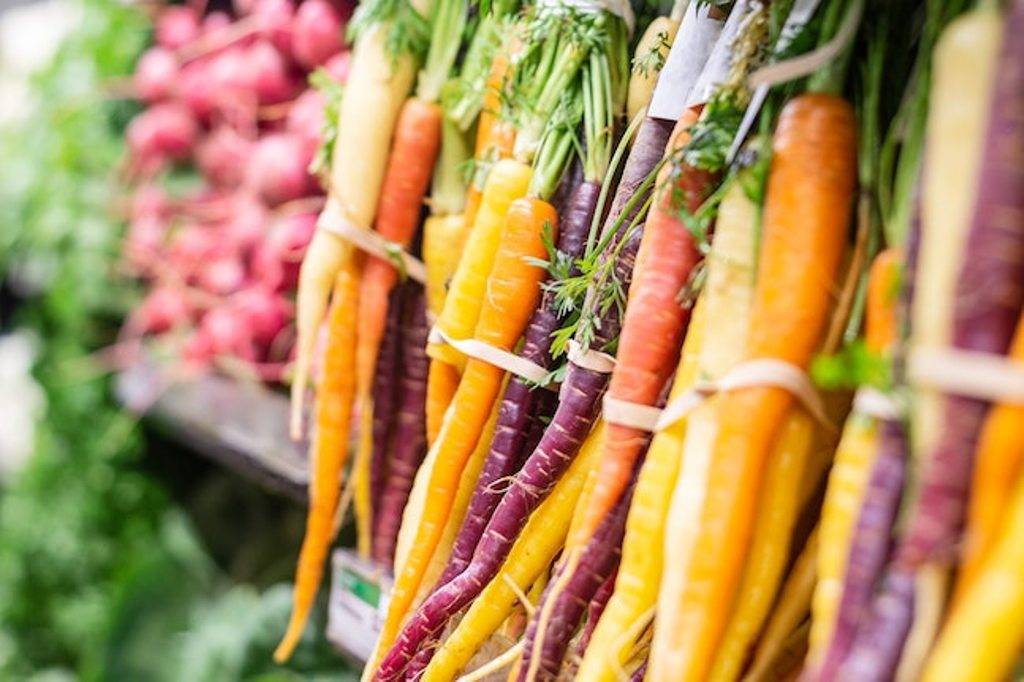
Root crops are buried treasures that can be difficult at first, but the harvest is always rewarding. Root vegetables includes turnips, carrots, beets, parsnip etc. We will not include potatoes at the moment because they grow in different ways and are easy to grow. The key to planting root crops is to establish a good seedbed, start as early as possible, and stay on top of thinning and weeding.
Step-by-step guide to grow root crops
Building a Bed
Root crops need loose, porous soil to grow and develop roots. On all soils except sandy soils, it is important to build raised beds. Raised beds allow the soil to warm up and dry faster in the spring. And, if built properly, you'll never need to walk on the ground, so it will remain loose and crumbly. Make the bed 8 to 10 inches high and not more than 3 feet wide, as you like.
Surround the bed with untreated wood, plastic wood, bricks, cement blocks, or stones. Avoid using treated wood. You can also build a raised bed temporarily in the spring, just pile up the soil and level the top of the bed. You have to rebuild the bed every spring because it will naturally flatten out during the growing season.
Properly Clean the Soil
Well, you may not have to actually "clean" the soil, but removing branches, rocks, and blocks of clay can help provide a long, straight space for roots. Root crops form taproots that need to be dug into the ground. This is why they are difficult to transplant and are best grown from seeds sown directly in the garden.
Fertilize.. But not much
Root crops need a certain amount of fertility to grow best, but too much nitrogen fertilizer will cause hairy roots or plant roots to have lush green but smaller roots. According to soil tests, organic fertilizers with a higher content of phosphorus and potassium than nitrogen are added. These nutrients are the key to good root formation. Add a layer of finished compost 1 to 2 inches thick before planting, but avoid adding fresh manures as they can contain a lot of dissolved nitrogen. If grown on heavy clay soil, consider adding sand and culture soil and lightening the bed to improve seedling growth. For best growth, keep the pH between 6.0 and 6.5.
Remember your Roots
Some root crops, such as radishes, germinate and mature very quickly, usually within 30 days of planting. Others, like parsnips, require the entire season (100 days) to mature. Knowing the maturity of the planting allows you to predict when to harvest. It takes up to 90 days for a large carrot variety to mature, or a small carrot variety for 50 days to mature. For small beets, you can harvest the same kind of beet within 30 days, or let it mature for another month to get full-size roots.
Choose the variety according to your garden. Plant beets, radishes and short-root carrot varieties in heavy clay like Little finger and Thumbelina. You are more likely to get a good harvest from these roots. Loose sandy soil is suitable for growing longer / larger roots, such as Imperator-type carrots (such as Atomic Red), parsnips, and turnips.
Planting Time
Root crops germinate best in soil conditions of 50°F and 60° F. Start planting two weeks before the last frost in the area. Flatten and smooth the top of the raised bed. lant or spread the seeds alternately according to the packaging instructions. Cover the seeds with potting soil, sand, or a thin layer of garden soil. Moisten the bed. If the weather is still warm and sunny, cover the bed with floating mulch or a thin layer of grass clippings to keep the bed moist.
Holds water well. Some roots, like radishes, quickly germinate in 2-3 days. Others, like carrots and parsnips, can take 2 to 3 weeks to germinate. You can continue to plant radishes, carrots, and beets every few weeks in the summer for a continuous harvest of these roots.
Feed, Weed and Water
Root crops cannot compete well with weeds. Weeds will quickly take over and reduce your crop yield. Keep the bed weeded, usually by hand. If you are weeding with a hoe, please cultivate carefully so as not to disturb the roots.
Keep the beds well watered. Water the roots few times a week instead of watering every day. This will encourage larger and longer roots.
For all roots, except radishes, fertilize monthly with a granular compost low in nitrogen. Keep pests away by mulching or spraying organic matter. In general, these roots do not have much problem with pests and insects.
Ready to Eat
Take advantage of your harvest bonuses. Choose radishes when the roots are forming, carrots and beets when they are large enough to bite and colored, and turnips when they are about the size of a small ball.
Young turnips also have a mellow taste and an apple-like texture, which makes them crispy when peeled before eating raw. No carrots, beets, turnips or passes can be left in the garden in the fall. Cooler weather helps to sweeten these roots as they age.
















